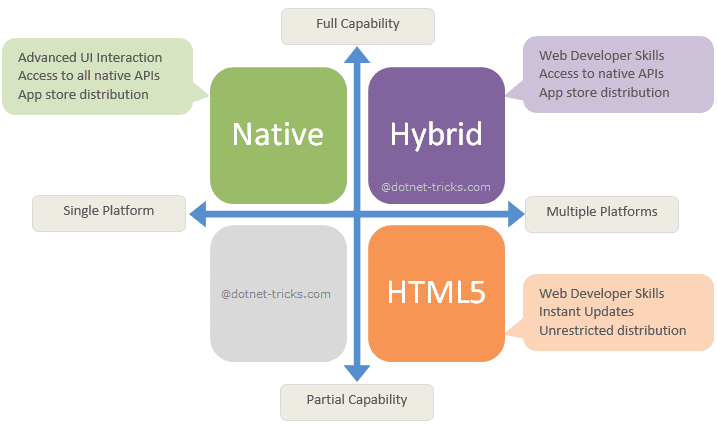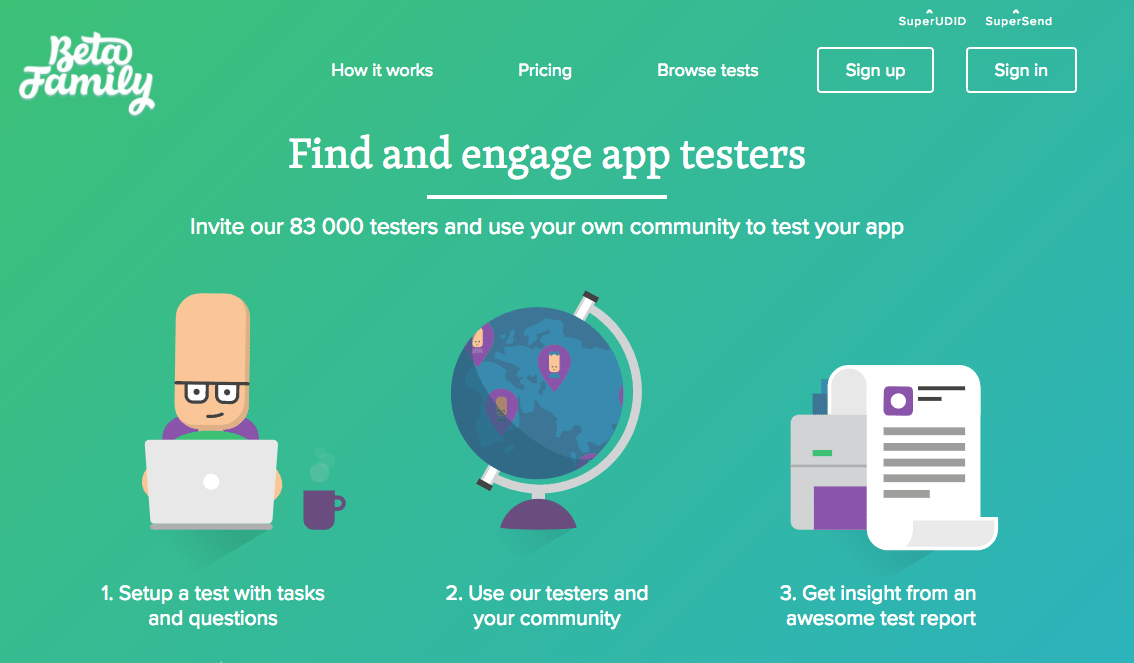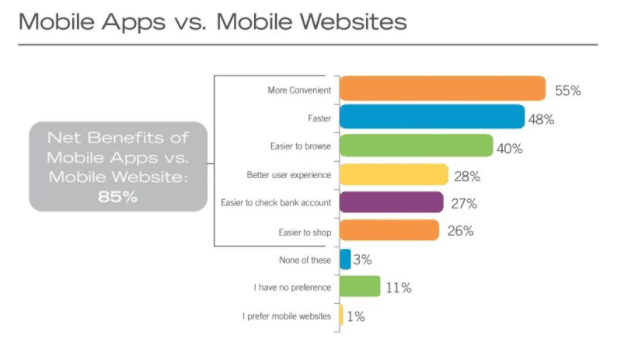17 Top Mobile Development Practices

Developing a mobile app can be intimidating, especially if you’ve never done it before.
Even if you’ve got some experience with this, there are still so many factors to take into consideration. But nothing worth doing comes easy.
Just like anything else, you’ll need to work at it if you want to become an expert developer.
But with that said, everything is easier if you have a guide or reference that you can follow. While there isn’t a black and white blueprint for developing a mobile application, there are are still plenty of resources that can help you.
As an industry expert who has experience as a developer, I’ve identified the top mobile app best practices for you to keep in mind when you’re going through the development process.
Create a Mobile App for FREE with BuildFire
I’ll explain what you need to know about each one of these best practices so that you can set yourself up for success. Here are the top 17 factors to prioritize.
1. Conduct your research
Your app doesn’t stand a chance to be successful if you don’t conduct your research ahead of time. There are lots of components that you need to analyze.
First, you’ve got to identify the target audience of your app. Understanding who they are and how they behave will make your life much easier as a developer.
Once you’ve identified who your prospective users will be, then you need to figure out how your app can meet their needs. How will your app make their lives better? What value does your app offer?
Who else has an app that has similar features and functions to yours? This means that you’ll also have to research your competitors.
If you don’t conduct all of your research before you start development, you could potentially waste lots of time and money building an app that nobody needs or wants.
2. Choose a development method
Not all apps are built the same way. Before you dive in, you’ll have to decide if you want to build a native, hybrid, or web-based mobile application.
There are pros and cons to each method of development.
Part of this decision could have to do with the type of app that you’re building. For example, for those of you who are going to build a game app that needs to have a flawless user experience, you’ll probably be better off with a native app.
Native apps are great, but they are going to be more expensive to develop and you can only develop them for one platform at a time.
This isn’t ideal if you plan to launch your app on both the Apple App Store and Google Play Store simultaneously. Hybrid development is less expensive and gives you the option for cross-platform development.
Web apps are for those of you who want to build an app that’s not restricted to the app stores for distribution.
Making this decision will also depend on what types of skills you have. So just make sure that you get all of this sorted out before you start. Then you’ll be able to decide if you need help.
Maybe you’ll want to use a custom app builder, such as BuildFire, as your solution.
3. Pick your platform
If you decide to go with the native route, you’ll need to choose between iOS or Android development.
Refer back to the research that you conducted earlier about your target market. Find out what devices your prospective users have. This will help aid your decision.
That’s because there are differences between Apple and Android users.
Figuring out which platform your target audience is active on the most is a huge decision. It’s especially important if you’re only launching on one store initially.
If you’re going to develop both native apps by yourself, you might be biting off more than you can chew if you try and build both at the same time.
Eventually, you’ll definitely want to have your app available on both stores. But right now you may need to decide between the two.
4. Prioritize security
It may not seem like a concern right now, especially in the early stages of development, but think about your final product for a minute.
It’s going to have tons of data and sensitive information. Your app is going to host info about your company as well as your users.
Depending on what your app is used for, you may even be collecting payment information, such as credit cards. You’ll have access to information like home addresses, phone numbers, and anything else provided by your user base.
It’s your responsibility to protect that data. That’s why you need to prioritize security from the very start.
Users will hesitate to provide you with information if your app isn’t secure. If security gets breached, it could be so damaging to your brand that it will be tough to recover.
As a developer, you need to take precautions and use encryption as well as other tactics, like two-factor authentication (2FA), to protect sensitive info.
Make sure users can wipe all of their data if their device gets lost. Set up automatic backups as well.
5. Test, test, and test again
Tests need to be run throughout the entire development process.
Don’t just wait until the end to test the performance. By then, it’s too late. It’s much easier to test your progress along the way.
It’s going to be much harder and more complex to identify and fix problems if your testing isn’t done periodically. One of the best ways to test your app is with beta testers.
Try using online resources and platforms like Beta Family to put you in contact with testers.
Now you’ll be able to get feedback directly from testers. You can identify bugs, crashes, and other error reports.
This will help optimize the performance of your app.
6. Keep the design in mind
Developers and designers are very different.
For the most part, developers tend to be more technical, while designers have a reputation for being more creative. But with that said, you can’t have your blinders on when you’re developing an app.
You need to understand how the design components are going to work so you can code the app accordingly. In order to get designers and developers working together effectively, your entire team needs to be on the same page.
Use mood boards and other tools to help get all of your thoughts and design elements organized.
This will make your development process much easier and reduce the chances of having to make lots of changes late in the game in order to accommodate the designers.
For those of you that know how to develop and design, you should still sort out your design elements in these early stages.
7. Build around a strong core
Build a robust core right from the beginning.
Make sure you have a list of all the features that are the most important for the functionality of your app. This will be used for your core coding.
Other features and functions can be built around the core. You can add these in the later stages of development as plugins, if necessary.
Get Started With BuildFire Today!
Pick a template to start designing the app yourself, or let our professional design team build it for you.
- Mobile app development for iOS & Android
- No coding required
- 150+ pre-built features
- Unlimited customization
- 14 day free trial
Using plugins at the end of your core code will help make your app much lighter. This makes things easier for maintenance and will help your app run faster.
8. Focus on the user experience
Don’t develop with blinders on. You need to always have your final product in mind.
Your app will eventually be in the hands of thousands or even millions of users (hopefully).
Take a look at the reasons why users prefer to use mobile apps over mobile websites.
It all comes down to factors like:
- convenience
- speed
- experience
So you need to make sure that your development time, effort, and funds are invested in these factors from the very beginning stages.
Prioritizing the user experience will help ensure that your app is successful and makes lots of money, which I’m assuming is your main reason for doing this in the first place.
9. Ask for feedback
You’re going to need feedback to properly develop your app.
I briefly touched on this subject earlier when we talked about testing, but it’s worth discussing in greater detail.
Yes, you’ll get feedback from beta testers. But take this one step further. You can reach out to other developers that you know for advice.
When you’re working on a project for a while, it can be tough to view your progress from a neutral perspective. You may not see something obvious that another developer would easily notice.
It’s best to get a fresh set of eyes on your work. Other developers can help you identify things that a beta tester or average user wouldn’t notice.
So don’t be afraid to reach out to people in the industry who you have formed relationships with. Who knows, maybe you can even return the favor for them one day.
10. Follow the app store development guidelines
Earlier you picked a platform. Now you’ve got to follow those guidelines of that operating system in order to properly develop your app.
However, you need to be familiar with both regulations and best practices for the Apple App Store and Google Play Store, even if you’re only developing for one of these right now.
As I said before, you’re eventually going to want to be on both. Even though you’ll have to write new code when you launch again on the other platform, you’ll want to understand these guidelines now to make this is easy as possible in the future.
If you don’t follow their rules, you could be rejected from the app store. So figure this out ahead of time so you don’t get delayed or have other problems.
11. Add accessibility features
Your app needs to accommodate all prospective users. This includes people who have disabilities.
Focus on this during development and don’t make things too difficult for those people.
You need to add features such as voice assist, captions, the ability to enlarge text, and things of that nature to help accommodate their needs.
12. Plan for updates
The app development process isn’t over after the app launches. Your app is going to need constant improvement and regular maintenance.
As you can see from these numbers, this maintenance isn’t necessarily cheap.
Planning for this now will make your life easier and save you some money in the future. You want to make sure that it’s easy for you to access and change different elements for updates.
This will also ensure that your app is performing well at all times, which relates back to our earlier point about focusing on the user experience.
13. Personalization matters
Let’s continue talking about how users experience your app. You want to make sure that their experience is personalized.
So you need to take this into consideration during your development stages.
Write code that will easily allow you to have analytics and other tools built into your app. These tools can help you monitor the behavior and habits of your users. Then you can use this information to personalize their experience.
For example, let’s say you’re building a mobile commerce app. You can use a customer’s browsing behavior to send them relevant push notifications about their interests.
14. Teamwork
You’re not developing this app alone in a vacuum.
Part of being a great developer means that you need to be able to work with other people effectively. This will help you build a much better app.
I’m not saying that you need to be friends with everyone on your team and hang out with them outside of work. But you need to have a strong working and professional relationship with everyone.
It’s a bonus if you get along with people enough to go grab a beer or a coffee during your personal time. This helps form stronger bonds.
So make the effort to get to know other developers, designers, and managers on your team.
15. Continuous integration
Continuous integration will streamline the maintenance of your mobile app.
This relates back to one of our earlier points about testing. Implementing CI to your coding process means that work will be checked by different stages.
With continuous integration, your app will have fewer mistakes and errors because the system will identify them before the code gets applied to the app.
This is perfect for situations when multiple developers are all writing code at the same time.
16. Build with analytics in mind
You want to make sure that it’s easy for you to analyze your app after it gets built.
Earlier I talked about planning for tools that help you monitor the user behavior, but you’ll want to keep other analytics in mind.
Analytics can help make your app better and improve the performance. But this is something that needs to be thought of while you’re still developing it. Then it will be easier to add these plugins later on.
17. Enjoy yourself
Just like with any job or task, sometimes your emotions can get lost in the shuffle.
Take a minute to realize that what you’re doing is awesome. You’re developing a mobile app. That’s not something that most people can do.
So try not to stress out, even though I know some days might be tough.
Sit back, relax, and enjoy the ride. The feeling when you finish will be extremely rewarding.
Conclusion
Developing a mobile app isn’t easy.
You’re going to encounter some speed bumps along the way. However, it’s definitely helpful if you have some guidelines as a reference.
So I hope that you can use this guide to help make your life as a developer much easier.
Follow these best practices for development if you want your app to be successful.
What is the most challenging part of your app development process?





